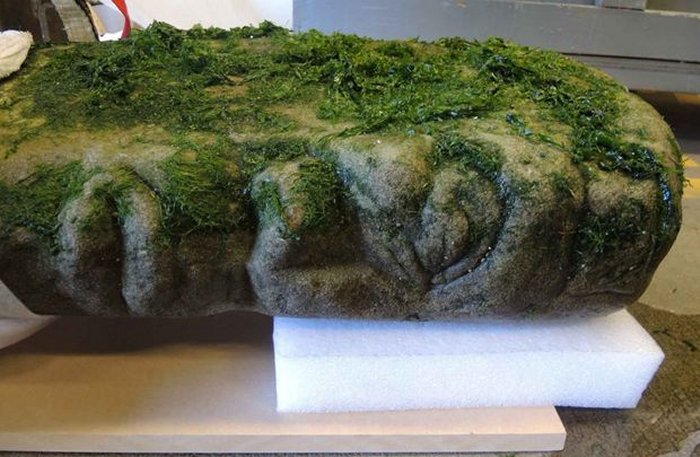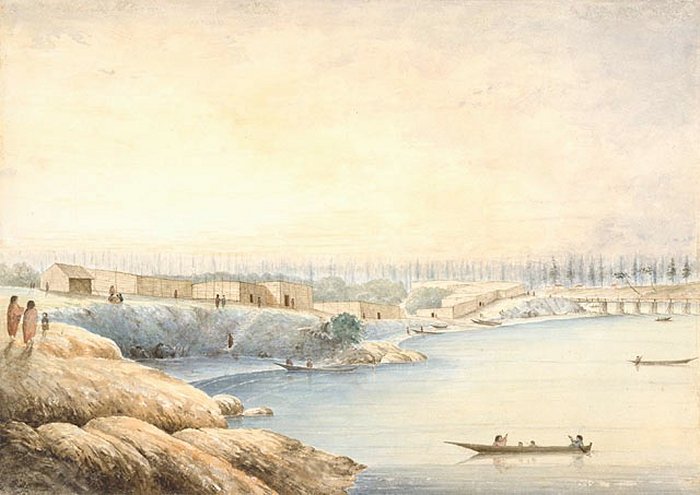Jan Bartek – AncientPages.com – An unusual carved stone pillar discovered in Canada has now been confirmed as an authentic indigenous artifact. It is a fascinating discovery because the carved 100-kilogram stone pillar sheds new light on the ancient history of this region.
The stone pillar was found by local resident, Bernhard Spalteholz on a beach in Victoria in the summer of 2020. It was transported to the Royal B.C. Museum where it was protected and preserved.
Museum’s archaeology curator Grant Keddie explained conservationists worked to protect the integrity of the stone, which was covered in algae after being submerged in sea water.

A carved stone pillar is shown in this July 2020 handout pH๏τo. Credit: Grant Keddie /Canadian Press
According to Songhees Chief Ron Sam the museum is currently discussing with the Songhees and Esquimalt First Nations where the pillar carved with the features of a face should be placed.
Unfortunately, contacts with the elders are now limited because of the COVID-19 pandemic. This makes it also difficult to learn more about the ancient history of this intriguing stone pillar.
However, what is knows so far is that it was most likely “a special stone that was used in rituals and ceremonies.”
Keddie speculates the pillar once stood near the edge of a cliff above the beach where it was found, until parts of the cliff came down in a landslide.

The Songhees Village in Victoria Harbour. This view is from Songhees Point looking north toward the Johnson Street Bridge (upper right). Painting by James Madison Alden, ca. 1857. Library and Archives of Canada.
“I think possibly some storm had turned (the stone) up,” he said. “It may have been buried further out to sea covered with seaweed and maybe only in recent years was shifted up onto this beach and then exposed,” Keddie told The Globe and Mail.
The reason the carved stone pillar was believed to had had special powers is because Coast Salish peoples had “weather specialists.”
They were believed to have “special powers to draw the salmon in when they were late, or you could undertake rituals (with) certain stones to change the weather to make it good for fishing, to make it bad for your enemies,” Keddie says.
See also: More Archaeology News
“Indigenous elders told this very brief little one-liner about these stone figures down near Finlayson Point, right where this thing was found.”
The location of the discovery matches Boas’ description of that figure as being “not far” from the military gun batteries once found nearby, he said.
“I always wonder, are there more of them out there?” Keddie added.
Written by Jan Bartek – AncientPages.com Staff Writer





